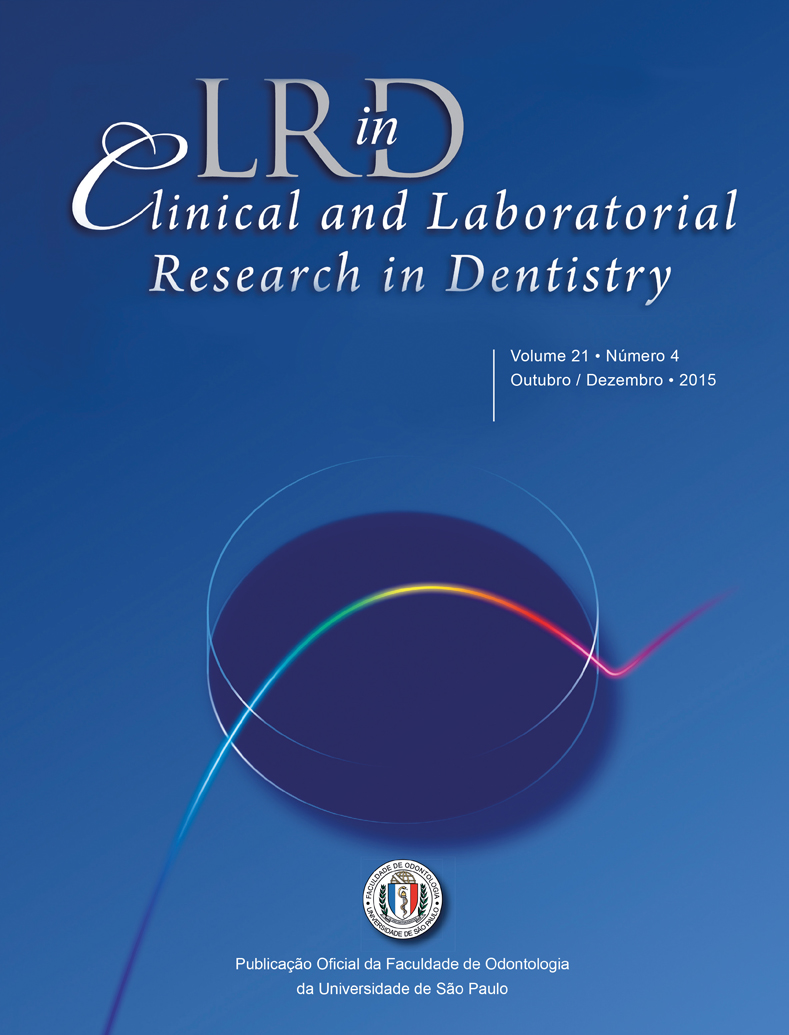Transverse microhardness of artificial teeth
DOI:
https://doi.org/10.11606/issn.2357-8041.clrd.2015.122750Keywords:
Artificial Tooth, Hardness, Acrylic ResinsAbstract
Objective: Hardness is an indicator of several mechanical properties of artificial teeth, also related to wear resistance. The purpose of this article is to map the microhardness of artificial teeth as a function of depth and commercial brand. Methods: Knoop microhardness of sectioned artificial second molars was measured every 200 µm starting at a depth of 100 µm up until 4700 µm of the following brands: Premium (Pr), Orthosit (Or), SR Postaris DCL (Po), Biotone (Bi), Artiplus IPN (Ar), VITA MFT (Vi), Natusdent (Na), Trilux (Tr), and Biolux (Bx). Results were analyzed with ANOVA for repeated measures and Tukey test (5%). Results: SR Orthosit PE commercial brand presented higher hardness values (until the depth of 3.1 mm was 30 N/mm2), significantly higher than the other brands analyzed. Conclusion: Knoop hardness did not present differences between layers for eight of the nine brands studied. Different hardness values were found between superficial and cervical areas for the brand SR Orthosit PE.
Downloads
Downloads
Published
Issue
Section
License
Authors are requested to send, together with the letter to the Editors, a term of responsibility. Thus, the works submitted for appreciation for publication must be accompanied by a document containing the signature of each of the authors, the model of which is presented as follows:
I/We, _________________________, author(s) of the work entitled_______________, now submitted for the appreciation of Clinical and Laboratorial Research in Dentistry, agree that the authors retain copyright and grant the journal right of first publication with the work simultaneously licensed under a Creative Commons Attribution License that allows others to share the work with an acknowledgement of the work's authorship and initial publication in this journal. Authors are able to enter into separate, additional contractual arrangements for the non-exclusive distribution of the journal's published version of the work (e.g., post it to an institutional repository or publish it in a book), with an acknowledgement of its initial publication in this journal. Authors are permitted and encouraged to post their work online (e.g., in institutional repositories or on their website) prior to and during the submission process, as it can lead to productive exchanges, as well as earlier and greater citation of published work (See The Effect of Open Access).
Date: ____/____/____Signature(s): _______________


